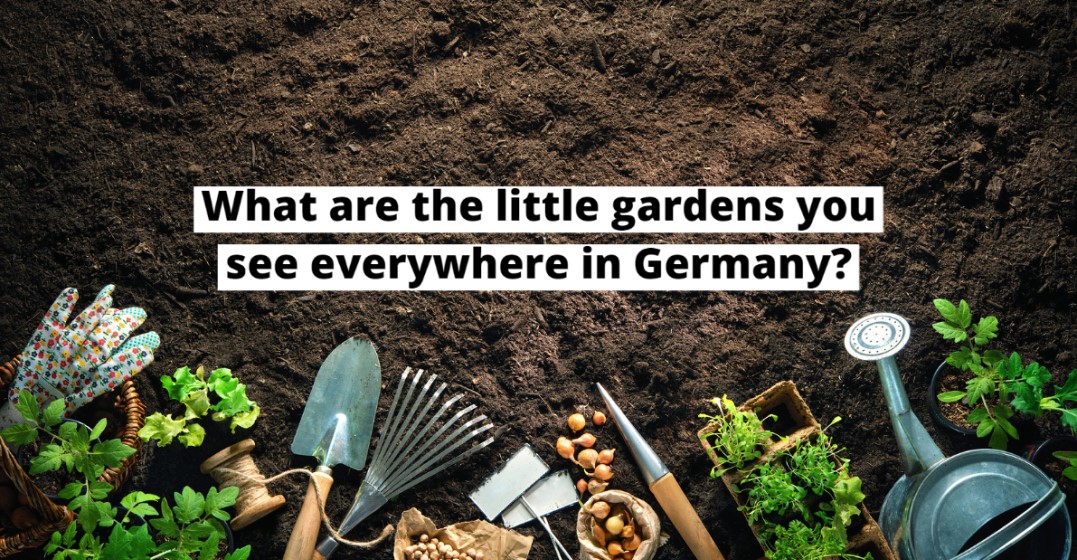by Erin McGann
Updated on January 9, 2024
If you’ve ever taken a train journey in Germany, you will be familiar with the sight of groups of small gardens, each fenced off, with a little hut at one end. These are Schrebergärten, (German allotment gardens) sometimes called Kleingärten, and they’re an important part of life in Germany.
Schrebergarten or Kleingarten are like British allotment gardens, or North American community gardens, where a large plot of land is broken up into small areas for the use of individuals for growing food. Many people think it’s called Strebergarten but that’s simply incorrect. In Germany, the average garden plot is a whopping 370 square meters, and usually includes a substantial little structure that serves as a garden shed, and a place to have a meal. Other common additions include kitschy garden ornaments like the Gartenzwerge, or garden gnome, and a big German flag flying from a pole. There are many jokes about people who love their allotment gardens, and the term ‘spießig’ will pop up. This is a hard one to translate exactly, but sort of means someone who is stuck in their ways, loves the rules, and small-minded. Of course, these attitudes are changing as more types of people take up Schrebergärten and make them their own.
The gardens are named after Moritz Schreber, a 19th-century doctor and university professor from Leipzig. He insisted that children in the increasingly industrialized cities needed space to run around, and burn off energy. This wasn’t because he was a kindly and gentle parent – on the contrary he felt children needed to be rigidly controlled. These outdoor spaces were to get rid of ‘excess energy’ to make children more obedient! However, these outdoor spaces for children that carried his name only began to include individual gardens after the doctor’s death.
These early gardens were also called ‘Armengärten’, gardens for the poor. The working people of the now overcrowded and smoky cities in the early 1900s were encouraged to grow their own fruit and vegetables on plots of land not suitable for anything else. That’s why you see so many of these gardens along railway lines, and in strange corners along highways. Indeed, during the two World Wars, these gardens were critical to providing Germans with fruit and vegetables.
Well, good news and bad news. Foreigners are welcomed more and more in these very German garden colonies of plant lovers. They are also enormously popular, so be prepared to be on a waitlist for many years before you get the chance to dig your trowel in. Not only that, but there are many, many rules around these gardens. Not only national laws, which include rules about not actually living in that cute garden hut, but also individual garden society, or Verein, rules. These will include which plants you can and can’t grow, how far your shed is from the fence, and the all-important Ruhezeiten, or quiet times. The best thing to do is look for the gardens closest to you, and there should be information about the Verein that runs it on the fence. Apply to several at once to ensure you have the best chance, and see if any of your friends has a garden you can volunteer to help with the garden chores.
You will definitely need to make sure your German is up to scratch so you can communicate with your fellow gardeners!
